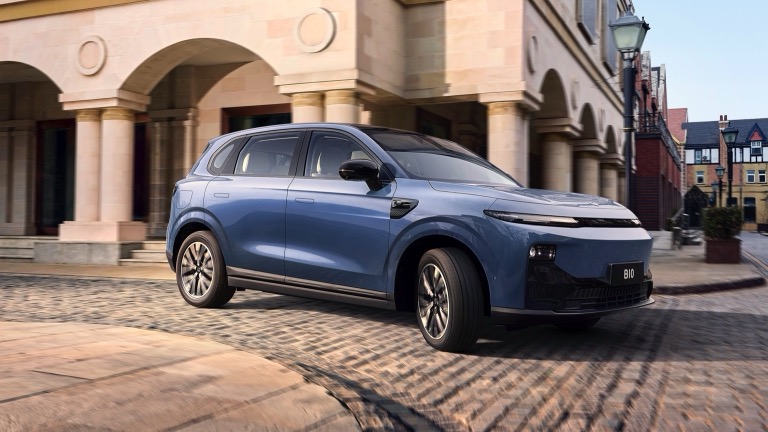
Leapmotor has confirmed Australian pricing and specifications for its second local model, the B10 electric SUV, which will join the brand’s C10 in what is shaping up to be a price‑competitive assault on the mid‑sized EV market. The B10 arrives in November in two variants with compelling driveaway pricing that positions it as Australia’s cheapest electric SUV on paper.
Confirmed Australian driveaway prices
- Style – $38,990 driveaway
- Design LR (Long Range) – $41,990 driveaway
Because these figures include on‑road costs, the B10 undercuts several rivals on headline price – even edging below the Chery E5 in most states. For buyers looking to switch to an EV on a tight budget, those prices will be the headline grabber.
Range, batteries and real‑world expectations
Leapmotor is pitching the B10 on the company’s Leap 3.5 architecture. The long‑range Design LR variant carries a 67.1 kWh lithium‑iron‑phosphate (LFP) pack rated at up to 516 km on the NEDC cycle. Given the NEDC’s optimistic bias, that figure is likely to translate to somewhere north of 450 km under WLTP-style testing – a practical outcome for many buyers if realised.
The Style variant uses a smaller 56.2 kWh LFP battery with 442 km quoted under NEDC; expect WLTP figures to land nearer 400 km in everyday conditions. LFP chemistry is increasingly common in affordable EVs because it’s cheaper, has strong thermal stability and typically gives longer cycle life, although it is heavier and less energy dense than some nickel‑based chemistries.
Charging: practical speeds for the segment
Both B10 variants support 11 kW AC charging for home and workplace top-ups. The Design LR adds DC fast‑charging capability up to 168 kW. At that peak rate, a 30-80 per cent charge is achievable in roughly 20 minutes in ideal conditions – a competitive result for a value‑priced mid‑sizer and one that will make longer trips more convenient where high‑power chargers are available. As always, real‑world charge times will depend on ambient temperature, charger output and battery state of charge.
Performance, dimensions and drivetrain
The B10 is a single‑motor, front‑drive layout delivering 160 kW and 240 Nm, which Leapmotor says allows a 0-100 km/h sprint in about 8.0 seconds. At 4.52 metres long the B10 is slightly shorter than Leapmotor’s C10 (4.74 m), positioning it firmly in the compact/mid‑sized SUV category that is currently one of the most contested in Australia.
Interior, tech and convenience
Leapmotor has equipped the B10 with features that punch above its price point:
- 14.6‑inch central high‑resolution touchscreen
- 8.8‑inch driver instrument display
- Qualcomm Snapdragon‑based infotainment hardware
- NFC and Bluetooth key, wireless phone charging, satellite navigation
- 360° camera system with dynamic guidelines and an integrated dashcam recorder
- Over‑the‑air (OTA) updates; Apple CarPlay and Android Auto are slated to be enabled via OTA by January 2026
Trim‑specific comforts on the Design LR include TechnoLeather upholstery, heated and ventilated front seats, a heated steering wheel, 12‑speaker surround sound, multi‑colour ambient lighting and a powered tailgate.
Safety and driver assistance
Leapmotor advertises LEAP Pilot, a Level‑2 ADAS suite, on both variants. That typically includes adaptive cruise control, lane‑keeping assistance and automated emergency braking in comparable packages, but buyers should review the precise specification and independent testing outcomes. ANCAP or other third‑party crash test ratings for the B10 are not yet universal for every Chinese entrant, so prospective owners should check the latest safety assessments and real‑world reviews before purchase.
Market context: where the B10 fits in Australia
The B10 will compete directly with value‑focused EVs such as the BYD Atto 3, Chery E5 and other compact to mid‑sized SUVs. Compared with the Atto 3, Leapmotor’s B10 undercuts on price and offers a competitive range and charging specification on the long‑range variant. However, market acceptance will hinge on dealer coverage, aftersales support, warranty and demonstrated reliability – areas where established players still hold an advantage.
Demand so far and dealer rollout
Leapmotor began deliveries in Australia in December 2024. Through to August 2025, the brand recorded 381 sales of its BEV variants – a modest but meaningful start for a new entrant. November’s B10 launch will test whether lower pricing translates into broader market share, particularly in a segment where buyers increasingly prioritise total cost of ownership, running costs and charging convenience.
What this means for Australian EV buyers
The arrival of a driveaway‑priced, feature‑rich B10 at this level is positive for competition and consumer choice. Affordable EVs that include realistic equipment and reasonable range while undercutting incumbents help accelerate EV adoption – provided quality, servicing and safety credentials satisfy buyers. For many suburban and regional drivers seeking an uncomplicated electric SUV for daily life, the B10’s mix of price, range and charging capability will be tempting.
What to check before you buy
- Confirm final WLTP range figures and real‑world estimates from local tests.
- Check which fast‑charging networks and connector types are supported and how that maps to your typical routes.
- Review Leapmotor’s local warranty, service network and parts coverage.
- Look for independent safety ratings and local vehicle reviews ahead of purchase.
- Factor in state‑by‑state EV incentives and registration differences that can affect the effective cost.
Conclusion
Leapmotor’s B10 arrives in Australia at an aggressive entry price, and its specification sheet reads well for buyers prioritising value. The long‑range variant promises competitive real‑world range and fast‑charging capability not always found in the most affordable EVs, while the base model offers a practical battery for everyday use. The ultimate test will be real‑world reliability, dealer support and safety performance – but on paper, the B10 looks set to sharpen competition in the mid‑sized electric SUV segment and could nudge more Australians to consider going electric.
Frequently asked questions (FAQs)
How much will the Leapmotor B10 cost in Australia?
The B10 is being offered with an Australian driveaway price of $38,990 for the Style variant and $41,990 for the Design LR (Long Range) variant. These prices include on‑road costs.
What range can I expect from the B10?
Leapmotor quotes up to 516 km NEDC for the 67.1 kWh Design LR battery and 442 km NEDC for the 56.2 kWh Style battery. NEDC is generally optimistic – expect WLTP or real‑world estimates to be lower (roughly above 450 km WLTP for the long‑range and around 400 km WLTP for the smaller battery, depending on conditions).
How fast does the B10 charge?
Both variants support 11 kW AC charging. The Design LR supports DC charging up to 168 kW, which can take the battery from about 30-80% in around 20 minutes under ideal conditions. Actual times will vary by charger, temperature and battery state.
When will the B10 be available and can I test drive one?
Leapmotor has scheduled Australian deliveries to begin in November. Test drives will typically be available through Leapmotor’s local dealer network – check the company’s Australian website or local showrooms for appointments and availability.
How does the B10 compare to the BYD Atto 3 or Chery E5?
The B10 undercuts both on headline driveaway price and offers competitive range and charging specs on the long‑range variant. BYD and other established brands may offer broader dealer networks, proven resale values and recognised safety ratings. Buyers should weigh price against warranty, service coverage and independent safety results.
About EV Evolution
EV Evolution is the leading online platform dedicated to Australian electric vehicle owners and enthusiasts. We foster a vibrant community, delivering essential EV news and insights, and enhancing user engagement through our innovative, AI-powered chatbot for dynamic discussions. Our mission is to empower Australian electric vehicle owners and enthusiasts by fostering a vibrant, AI-driven online community that connects, informs, and advances the nation’s electric vehicle landscape.




